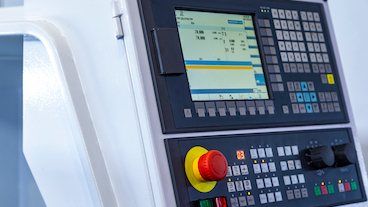User interfaces 101: HMI vs HCI
Human Machine Interfaces (HMIs) vs. Human Computer Interfaces (HCIs)User interfaces (UIs) play an essential role in the activities of countless businesses. If a business uses a device to produce and/or sell its goods, it will likely control the device through a UI. There are several types of UIs found in the workplace, including human-machine interfaces (HMIs) and human-computer interfaces (HCIs).
Both HMIs and HCIs are designed to provide control mechanisms for one or more human operators. Using them, a person can control the device to which the HMI or HCI is connected. With that said, HMIs and HCIs are designed for specific purposes. So, what’s the difference between them exactly?
What is an HMI?

An HMI is a UI that allows a person to control a machine. Machines, of course, are pieces of powered equipment that create and apply mechanical force. In manufacturing, machines are frequently used to cut and form raw materials into finished products. To control these and other machines, workers use an HMI. The HMI serves as a physical control system for workers to control a machine.
The complexity of an HMI can vary. Some are simple, consisting of basic knobs, levers and buttons. Other HMIs are more complex, featuring intuitive voice- and/or touch-controlled systems. Regardless, all HMIs are used to control a machine.
What is an HCI?

An HCI, on the other hand, is a UI that allows a person to control a computer. Computers differ from machines in the sense that they are designed to process and store data, whereas machines are designed to apply mechanical force. Like machines, though, most computers require input from a person to carry out their functions. An HCI allows a person to control a computer.
Not surprisingly, touch screens are one of the most common types of HCIs. Whether it’s a capacitive, resistive, surface acoustic wave (WAV), or any other touch screen, it will allow a person to control the computer with which it’s used. Tapping the touch screen will create commands that tell the computer what it should do next.
Peripherals like keyboards and mice are also considered HCIs. Desktop computers typically don’t have a touch screen. Instead, they require the use of a keyboard and a mouse to perform commands.

About NMG
NMG has more than 85 years of experience partnering with organizations to bring their industrial, IoT, lighting, medical, telecommunications, consumer, and aerospace products to life. We solve your most complex challenges in engineering design, manufacturing, and supply chain management.
Follow NMG
Could your company use results like this?
We want to learn about your organization and understand your unique challenges.
